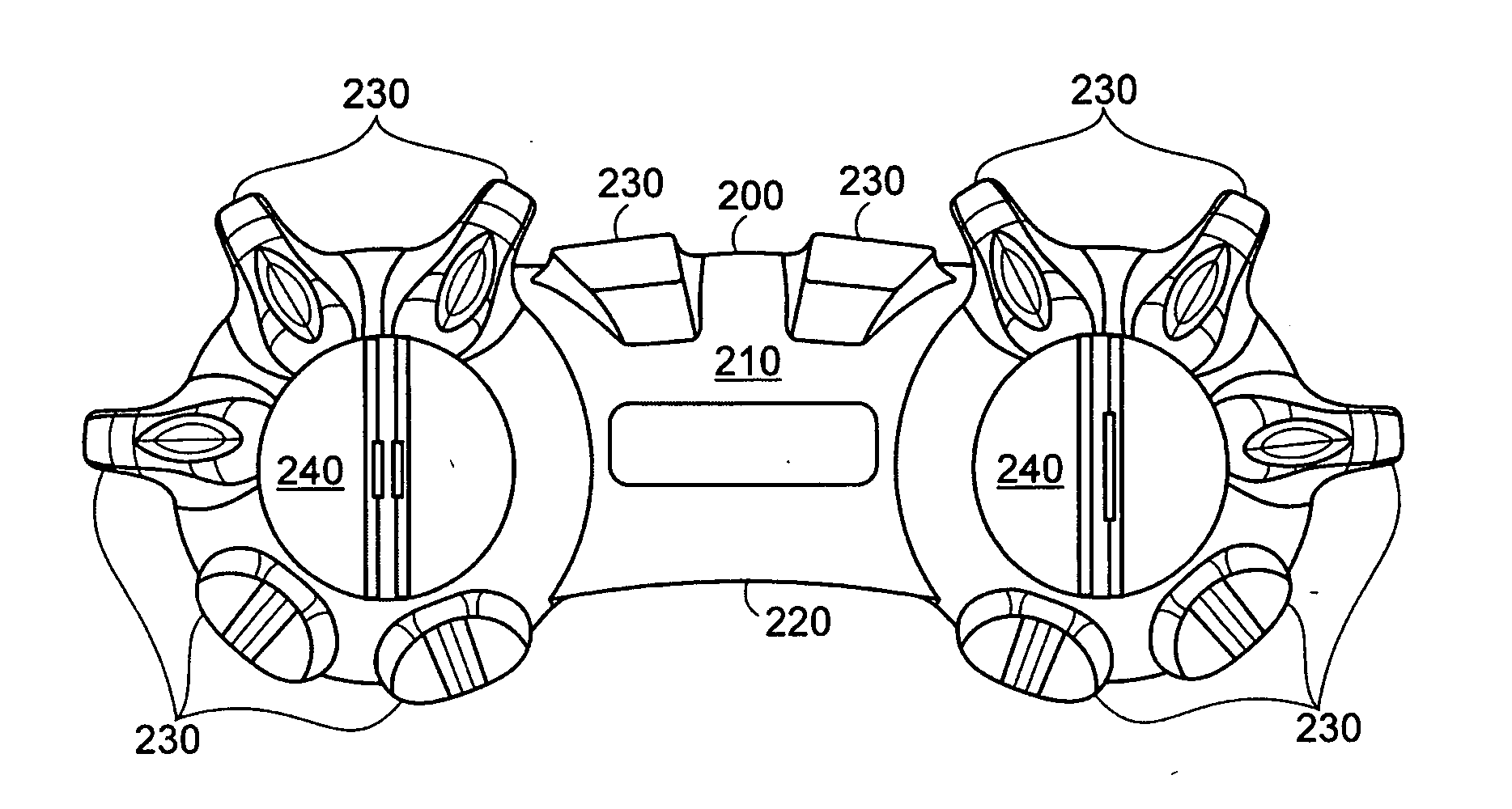Removable footwear traction plate
a technology of traction plate and removable footwear, which is applied in the direction of fastenings, footwear, apparel, etc., can solve the problems of not providing arbitrary rotational orientation of traction elements with respect, and footwear traction approaches that do not provide for removable traction structures
- Summary
- Abstract
- Description
- Claims
- Application Information
AI Technical Summary
Benefits of technology
Problems solved by technology
Method used
Image
Examples
Embodiment Construction
[0021] Definitions. As used in this description and the accompanying claims, the following terms shall have the meanings indicated, unless the context otherwise requires:
[0022] A “shoe” means any outer covering for a foot including, without limitation, athletic footwear, sandals, boots, and slippers.
[0023] A “flange” means any generally planar object. A flange may be solid or web-like or any combination of portions that are solid or web-like. A flange comprises any planar geometry including concave portions or convex portions or combinations of concave and convex portions.
[0024] A “surface-engaging element” is any physical configuration that provides traction when contacting a surface. Surface-engaging elements may include, without limitation, any of the protrusions known in the art for that purpose including any of the protrusions or combinations of protrusions taught in U.S. Pat. Nos. D320882, D454248, D468895, D493276, 6,023,860, 6,041,526, 6,052,923, 6,327,797, 6,354,021, 6,4...
PUM
 Login to View More
Login to View More Abstract
Description
Claims
Application Information
 Login to View More
Login to View More - R&D
- Intellectual Property
- Life Sciences
- Materials
- Tech Scout
- Unparalleled Data Quality
- Higher Quality Content
- 60% Fewer Hallucinations
Browse by: Latest US Patents, China's latest patents, Technical Efficacy Thesaurus, Application Domain, Technology Topic, Popular Technical Reports.
© 2025 PatSnap. All rights reserved.Legal|Privacy policy|Modern Slavery Act Transparency Statement|Sitemap|About US| Contact US: help@patsnap.com



